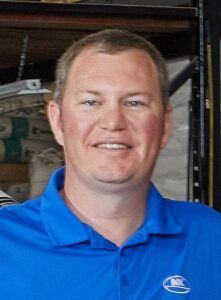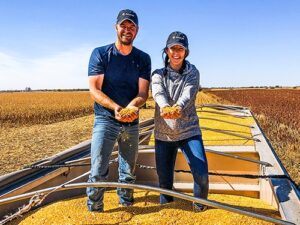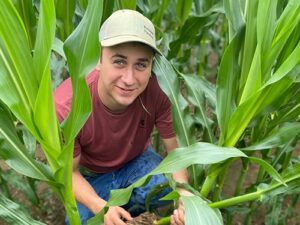Marvin Frink served in the U.S. Army for 15 years, with deployments in South Korea, Germany, Saudi Arabia and Iraq. When he returned home, his father, the late Rev. Kirby Frink, saw that his son was suffering from post-traumatic stress disorder (PTSD). Rev. Frink remembered that as a child, his son enjoyed their frequent visits to cattle farms and rodeos. Rev. Frink thought reconnecting with cattle might be good for his son.
Turns out, dad was right.
His son now considers cattle farming his “agri-therapy.” “It gives me purpose and accountability,” he says. “I meet the Lord at the fence line every day.”
At the urging of his father and with help from the Farmer Veteran Coalition, a national nonprofit nongovernmental organization that helps veterans transition from military service to agricultural careers, Marvin Frink started cattle farming. He began with two beef cattle and today raises 103 head at his Briarwood Cattle Farm near Red Springs, North Carolina.
It gives me purpose and accountability.
“I’ve been with the Farmer Veteran Coalition since 2013,” Frink says. “I remember Michael O’Gorman [the organization’s founder] taking me to visit with then-Secretary of Agriculture Tom Vilsack. They told me about the grants and resources available to veterans.”
The number of military veterans moving toward agriculture increased after 9/11, says Natalie Monroe, communications & marketing manager for the Farmer Veteran Coalition.
“Veterans are service-minded and accustomed to seeing through what needs to be done,” Monroe says. “Farming becomes their new mission — it provides new life and purpose while also enabling veterans to nourish their communities.”
Enhancing the Quality of Life
Another organization helping veterans, AgrAbility, has the goal of enhancing the quality of life for farmers, ranchers, and other agricultural workers with disabilities. There are currently AgrAbility projects in 20 states.
The AgrAbility website features a video, “The Next Mission: Breaking Down Barriers for Veterans in Agriculture,” in which veterans explain why they wanted — and needed — to farm, says Cindy Chastain, the organization’s veteran outreach coordinator. The veterans in the video speak of farming as hard work but also as a restorative experience that gives their lives purpose.
“It would be great if more agricultural employers offered jobs to veterans as they come out of the military,” Chastain says. Farmers also can help veterans by offering internships or opportunities to build sweat equity to someday own their own farms, she adds.
The U.S. Department of Agriculture, which offers various programs for veterans, also provides training to military personnel while they’re making the transition from active service to civilian life.
Visit farmvetco.org, agrability.org and usda.gov/our-agency/initiatives/veterans for more information on programs that support veterans in agriculture.








 Jena and Levi Ochsner
Jena and Levi Ochsner Alex Rusch
Alex Rusch Jenny Weg
Jenny Weg